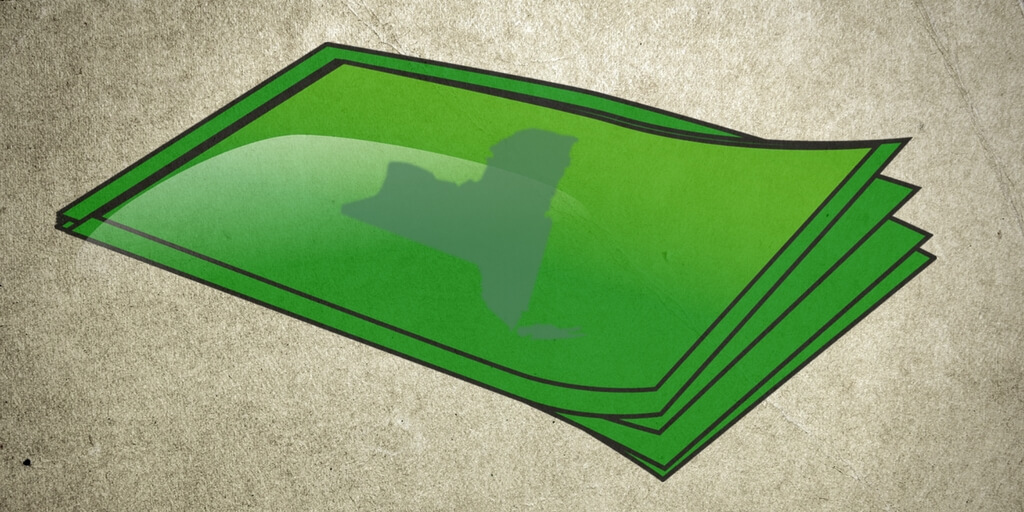Phase 3 of New York’s reopening plan allows restaurants and food service businesses to expand or resume operations. Reopening restaurants encompasses most food service establishments, including food trucks and concessions.
In Phase 1, food service businesses could reopen for takeout and delivery only. In Phase 2, restaurants could host diners in open outdoor seating, with restrictions. Once in Phase 3, they may resume indoor customer seating under State guidelines.
The industry-specific guidelines have been divided into five categories: Physical Distancing; Protective Equipment; Hygiene, Cleaning, and Disinfection; Communication; and Screening. Summary Guidelines for food services include both Mandatory and Recommended Best Practices. The restaurant guidelines also indicate that businesses must follow other CDC and Department of Health recommendations to help protect workers and customers and prevent the spread of the coronavirus.
Interim Guidance for Outdoor and Take-Out/Deliver Food Services During the COVID-19 Public Health Emergency
Interim Guidance for Food Services During the COVID-19 Public Health Emergency
Physical Distancing
All food service establishments are subject to a 50% indoor occupancy limit in Phase 3. This restriction applies to both personnel and customers. To achieve this, employers should consider reducing on-site headcount, adjusting work hours and shifts, prioritizing tasks to focus on those that allow for social distancing, and posting signs that provide clear directions to staff.
Outdoor seating capacity is restricted to the number of tables and seats that can be safely arranged with proper social distancing. Indoor and outdoor tables must be placed at least 6 feet apart. When this is not practical, businesses can install physical barriers between tables that are a minimum of 5 feet in height.
Employees must wear acceptable face coverings at all times. Patrons must wear face coverings unless they are sitting at their table. Everyone at the table must be part of the same party, up to a maximum of 10 people. Customers can sit at a bar or communal tables only if they can maintain 6 feet between them.
Restaurants must post 6-foot social distancing markers to remind workers and customers to keep space between them. These markings are especially crucial in commonly used areas such as cash registers, places where employees clock in and out for their shift, where health screenings will occur, break rooms, restrooms, and take-out windows. Restaurants should mark exits and entries to avoid confusion, ideally reducing bi-directional foot traffic.
Additional Physical Distancing Suggestions
Servers should have specific work areas to avoid unnecessary crossover. Kitchen staff assigned to prepare food, cook during the shift, or clean should be designated to one area for the entire shift. Management should train these employees on ways to reduce physical contact with food, shared surfaces, or other coworkers. If asocial distancing is not practical, restaurants can use physical barriers where it would not negatively affect airflow or block emergency and fire exits.
As in earlier phases, reopening restaurants should continue to enable customers to place takeout orders online or by phone only. Customers should remain in their cars until the food is ready for pick-up and take advantage of contactless orders, delivery, payment, and pick-up procedures.
Protective Equipment
Except when seated at their table, all customers must wear face coverings unless they are under two years old or have a medical condition that restricts their ability to wear them. This requirement applies, for example, for trips to the bar, restroom, outside, or to pay.
Employees must wear face coverings whenever they come within 6 feet of a coworker or customer. Employers must provide face coverings to all employees at no cost and clean or replace them when necessary. However, employees may wear their own face coverings. Employers also must train employees on how to use face coverings properly while at work.
Food service businesses should reduce the sharing of objects or equipment. Where that is not possible, they must supply employees with disposable gloves to prevent the transmission of the coronavirus. Staff should wear disposable gloves when handling food and replace them before switching to a new task. Workers must practice proper hand hygiene when disposable gloves are not being used.
Additional Protective Equipment Suggestions
Operators of food trucks and concessions without running water must require staff to wear disposable gloves, use hand sanitizer, and follow proper federal, state, and local food handling and hygiene requirements.
Hygiene, Cleaning, and Disinfection
Businesses offering food services must adhere to hygiene and sanitation requirements set forth by the Centers for Disease Control and Prevention (CDC) and the Department of Health (DOH). These requirements cover areas of the kitchen where employees may handle food preparation and serve customers, high-touch surfaces and equipment, and indoor and outdoor seating areas.
Restaurants must arrange for frequent cleaning at least after every shift, daily, or more frequently. They should pay particular attention to shared objects and surfaces and high-traffic areas. This cleaning and disinfecting should be performed using the Department of Environmental Conservation (DEC) products recommended for COVID-19. Restaurants must maintain a log that documents the date, time, and scope of cleaning and disinfection.
Restaurants must perform a deep cleaning and sanitation as frequently as possible. They may need to engage the services of a third party specializing in cleaning and disinfecting buildings.
Where possible, restaurants should increase the circulation of outdoor air while maintaining safety precautions–hence, the preference for outdoor seating.
Staff must be provided with hand hygiene stations that include soap, running warm water, and disposable paper towels, as well as an alcohol-based hand sanitizer containing 60% or more alcohol for situations where handwashing is not feasible. Signs near hand sanitizer stations should direct employees to wash visibly soiled hands with soap and water. Restaurants also need to ensure that receptacles for proper disposal of soiled items, including face masks and disposable gloves, are available.
Additional Cleaning Suggestions
Owners of food service establishments should consider switching to disposable menus. Reopening restaurants should also try to reduce the distribution of electronics to customers. These include buzzers used to notify customers that their table is ready and tablets used for digital menus or entertainment during the visit. Hand sanitizer should be readily available to customers, especially in high-touch areas.
Establishments offering take-out and delivery must implement the following:
- Provide hand hygiene stations for takeout customers.
- Require all staff to practice proper hand hygiene and use disposable gloves when necessary.
- Increase ventilation of indoor takeout areas through windows or some other means.
- Use single-use condiments and sauces whenever feasible. If not, staff must clean condiment bottles and containers after each use.
Communication
Once a reopening restaurant has read and digested the guidelines, it must determine how to implement them. Each business must develop a COVID-19 safety plan. The State has created a safety plan template to use as a starting point. However, each company should have a plan that is consistent with its business and facilities.
Employers may include additional policies and procedures in their safety plan that will assist with slowing down or eliminating the virus’s transition. Once that is complete, the company must submit an affirmation confirming that they have read, understood, and intend to implement the guidelines.
All employees should be trained on the new protocols and educated on the importance of cleaning and sanitation, as well as the need to respect social distancing guidelines and wear face coverings, when appropriate.
Restaurants must have signs inside and outside of the building to remind staff and visitors of the importance:
- Covering their nose and mouth with a face covering.
- How to properly store and, when necessary, discard PPE.
- Adhering to physical distancing instructions.
- The need to report symptoms of or exposure to COVID-19, and how they should do so.
- The need to follow hand hygiene and cleaning and disinfection guidelines.
- Following appropriate respiratory hygiene and cough etiquette.
Many of the recommended signs can be found on the Centers For Disease Control and Prevention website, located here.
Screening & Tracking
A mandatory health screening assessment must be performed on all employees and vendors that visit the worksite. The screening should include questions about symptoms and an individual’s contact with COVID-19 patients. It can also include temperature checking, testing, and the collection of contact information. The guidelines encourage employers to screen staff before they report to work, if possible.
For situations involving positive cases or potential exposure, business operators must follow the DOH’s “Interim Guidance for Public and Private Employees Returning to Work Following COVID-19 Infection or Exposure”. The guidance, which is likely to change, includes instructions on how to properly clean and disinfect work areas after learning of a positive case and when employees may return to work after exposure.
Upon reopening, employers must keep a daily continuous log of all employees and vendors that enter the restaurant. The log should consist of contact information for anyone who had close contact with workers, unless they wore appropriate PPE. Businesses should attempt to collect contact information for customers, but they cannot mandate customers to provide it. Contact information will help facilitate proper contact tracing when necessary.
Food service establishments will be required to notify state and local health departments if a worker tests positive for COVID-19 or has had contact with an infected individual. In the event of a positive case, employers must cooperate with contact tracing efforts while maintaining confidentiality.
What Should New York Restaurants Do Next?
Restaurants and other food service establishments open in Phase 3 must review the industry-specific guidelines and affirm that they have read, understood, and intend to implement them before reopening. You must draft and post a safety plan and post appropriate signage. You also need a strategy to perform health screenings and assist in contact tracing when required.
Each food service business must designate a safety monitor responsible for ensuring the company’s compliance with the safety plan and reopening guidelines. Employers have to train individuals responsible for conducting the health screening, collecting contact information, performing contact tracing, and notifying the state and local health department of positive tests.
All reopening restaurants must also develop a plan for cleaning, disinfecting, and performing contact tracing if a positive case occurs. Minimum measures should include cleaning and disinfecting all heavy-transit areas and high-touch surfaces.
For our latest information on reopening restaurants and other businesses, subscribe to our newsletter and follow Horton Law on LinkedIn.


